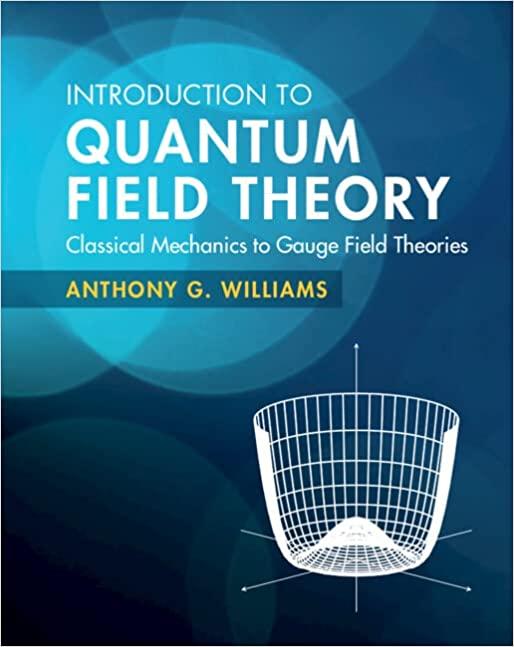Consider an (S U(3)) nonabelian gauge theory with coupling to eight real scalar fields in the adjoint
Question:
Consider an \(S U(3)\) nonabelian gauge theory with coupling to eight real scalar fields in the adjoint representation, \(\phi^{a}\) for \(a=1, \ldots, 8\). The covariant derivative is then \(D_{\mu}^{a b} \phi^{b}=\partial_{\mu} \phi^{a}+\) \(g f^{a b c} A_{\mu}^{b} \phi^{c}\). Define \(\Phi=\phi^{a} T^{a}\), where \(T^{a}\) are the eight \(S U(3)\) generators. Write down the Lagrangian density for the theory. Assume that some potential is added that causes \(\Phi\) to have a vacuum expectation value, \(\Phi_{0}=\langle\Omega|\hat{\Phi}| \Omegaangle eq 0\). Since \(\Phi_{0}\) is a traceless Hermitian matrix we can diagonalize it. Assume that after doing so we found \(\Phi_{0} \rightarrow \Phi_{0}^{D}=v D\) with \(v>0\) and with \(D\) being the diagonal matrix \(D=\operatorname{diag}\left(\frac{1}{2}, \frac{1}{2},-1\right)\). By referring to Eq. (5.3.33) explain why this corresponds to the symmetry breaking \(S U(3) \rightarrow S U(2) \times U(1)\) with \(S U(3)\) and \(S U(2)\) in their defining \(3 \times 3\) and \(2 \times 2\) representations, respectively. Explain why the "hypercharge operator" \(Y\) must satisfy \(Y \propto D\). How many gauge bosons acquire a mass and how many remain massless? Calculate the mass of the massive gauge bosons at tree level.
Step by Step Answer:

Introduction To Quantum Field Theory Classical Mechanics To Gauge Field Theories
ISBN: 9781108470902
1st Edition
Authors: Anthony G. Williams





